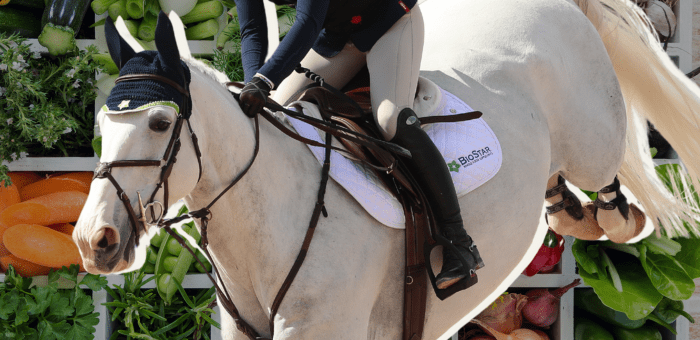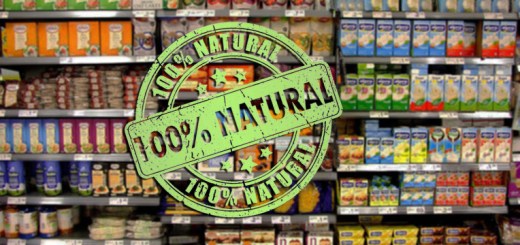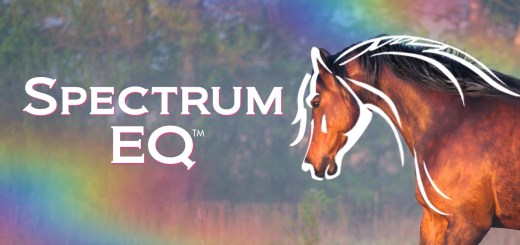
Ingredient Sourcing: Why It Matters
The Silk Road was an ancient trade route that connected Asia, Europe, and North Africa from the second century to the fifteenth century.
As the first major global trade route in history, the Silk Road was a conduit for cultural, economic, political, and religious exchanges between the East and West. Goods such as silk, jade, precious stones, porcelain, paper, tea, gunpowder, and spices came from China to Europe by way of the Silk Road. In exchange, horses, camels, honey, wine, wool, slaves, glassware, textiles, and manufactured goods traveled from Europe and North Africa to China.
In addition to the goods listed above, herbal medicines, foods, and plants were exchanged between East and West by way of the Silk Road. While researching its history, I found these commodities to be particularly interesting.
Quality of goods
![]() One thing that stood out to me was the emphasis that China and Mongolia placed on the quality of the goods they purchased via the Silk Road. For example, Persian glass was considered the highest quality on the market. Any merchant or trader who tried to swindle customers with fake Persian glass could receive corporal punishment and/or lose their hands, property, or status.
One thing that stood out to me was the emphasis that China and Mongolia placed on the quality of the goods they purchased via the Silk Road. For example, Persian glass was considered the highest quality on the market. Any merchant or trader who tried to swindle customers with fake Persian glass could receive corporal punishment and/or lose their hands, property, or status.
Trade today
![]() Today, raw materials and products flow around the world. While international trade has brought many benefits to consumers and companies, it has also brought about complications, particularly in regards to quality. How do we determine quality, and what defines quality ingredients for a horse or dog supplement?
Today, raw materials and products flow around the world. While international trade has brought many benefits to consumers and companies, it has also brought about complications, particularly in regards to quality. How do we determine quality, and what defines quality ingredients for a horse or dog supplement?
Why does sourcing matter?
How well a product works depends on several factors:
- Ingredient amounts (to determine efficacy)
- How the ingredients are blended and produced
- The quality of each ingredient itself
Understanding each component of a supplement
![]() Turmeric, for example, has been a staple in Indian and Chinese medicine and cuisine for thousands of years. Knowing its rich history and present-day influence on equine and canine supplements, BioStar sources turmeric from India, China, Indonesia, or Vietnam. These countries produce the greatest amounts of turmeric worldwide, alongside Bangladesh, Myanmar, Jamaica, Haiti, Costa Rica, Peru, and Brazil.
Turmeric, for example, has been a staple in Indian and Chinese medicine and cuisine for thousands of years. Knowing its rich history and present-day influence on equine and canine supplements, BioStar sources turmeric from India, China, Indonesia, or Vietnam. These countries produce the greatest amounts of turmeric worldwide, alongside Bangladesh, Myanmar, Jamaica, Haiti, Costa Rica, Peru, and Brazil.
Our next step in breaking down supplement components is learning how the turmeric was grown. We want to know whether or not it has been cured, and what drying method was used (was it boiled and then sun-dried, or was it exposed to industrial high-temperature commercial dryers and ovens?). Of course, we much prefer turmeric that has been boiled and sun-dried.

Identifying quality plant extracts
![]() When researching extracts, knowing which extraction process was used is essential when sourcing raw material for BioStar.
When researching extracts, knowing which extraction process was used is essential when sourcing raw material for BioStar.
Extracts are concentrated active compounds that provide more therapeutic benefits than powders of plant leaves, stems, and roots due to its higher potency.
Some herbs need a fresh extraction process in which they are harvested within hours to avoid any loss of phytochemicals. Other herbs need a drying process before extraction in order to concentrate the polyphenols.
The phytochemical extraction process itself can include the use of ethanol, glycerin, vinegar, water, or CO2, or it can be done via fermentation.
Other approaches to extractions include enzymatic hydrolysis, nano-particulate precipitation, salts formation, solvent combinations, ultrasound, and microwaves.
BioStar is the only equine supplement company to use Fermeric®, a patented fermented turmeric extract. Fermented turmeric has increased bioavailability and stronger anti-inflammatory effects than unfermented turmeric. Due to these circumstances, it costs significantly more than turmeric powder and is twice as costly as ethanol, glycerin, vinegar, water, or CO2 extraction. Regardless of the higher prices, we take pride in our quality ingredients, and in providing the benefits of the best turmeric to your horses and dogs.
Patented extracts
Patented extracts are backed by scientific research and published studies and are the most expensive extracts by far.
When considering patented extracts, it takes time to assess the science and talk to the company’s research and development team (the scientists behind the product). We want to ensure that we fully understand the extract’s actions in the body before making a purchase.
Extracts earn a patent by implementing new preparation processes, extraction methods, compounds, or specific phytochemicals in the prevention and treatment of illness.
In some cases, patented extracts require a collaboration between the supplement company formulator, the production manager, and the extract company’s researchers. All teams work together to determine:
- How the extract acts with other extracts or plant ingredients
- If it needs fat for absorption
- How pH levels affect the extract
- If it needs preservatives
- The extract’s shelf life
- How stable it is in a paste or liquid supplement
Potency
![]() Potency is based on the plant-to-extract ratio. For example, an extract that is labeled 50:1 means 50 parts of the original plant material are concentrated into 1 part of the extract.
Potency is based on the plant-to-extract ratio. For example, an extract that is labeled 50:1 means 50 parts of the original plant material are concentrated into 1 part of the extract.
These ratios can get tricky, because a 100 milligram dose of a 10:1 extract is 1,000 milligrams standardized, and 20 milligrams of a 50:1 extract is 1000 milligrams standardized. In other words, you have to give more of an extract with a lower ratio than you do of an extract with a higher ratio.
Problems arise with efficacy when a company uses a lower ratio extract combined with a low dose of the extract. Consumers tend to see the extract listed on the label without questioning the ratio or the dose and say, “Yeah! This product has turmeric in it!,” but it isn’t necessarily an effective amount.
The art of sourcing
Sourcing in the 21st Century has become an art. With an overwhelming number of options available, ensuring quality ingredients means taking much more time to assess the quality of raw materials (and to see through the marketing claims).
The non-negotiable Certificate of Analysis
![]() Certificates of Analysis (COA) are required in order for producers/distributors to retail plants and foods. Every shipment of raw material coming into a supplement company or co-packer should have a COA.
Certificates of Analysis (COA) are required in order for producers/distributors to retail plants and foods. Every shipment of raw material coming into a supplement company or co-packer should have a COA.
BioStar requires retailers to provide a COA before we purchase a raw material. You’d be amazed at how many COAs have unacceptable levels of lead and cadmium. We never purchase raw materials that can’t pass our standards for highest quality ingredients.
All ingredients are not equal
Unfortunately, there is no way for a consumer to identify a quality ingredient by reading a product label. Turmeric that is certified organic, grown on family farms, hand-picked, and traditionally dried can cost twice what companies with industrial-grown turmeric that is dried in commercial dryers charge. But consumers don’t know these details by simply reading a label.
An inferior raw material (plant or food) that costs less may indeed have less nutrient density, fewer phytonutrients, lower bioavailability, and, most importantly, a lack of efficacy necessary to provide real health benefits to your horse or dog.
The only products that can be identified easily as quality are patented; they’re easy to research, and the manufacturers often provide plenty of information and correlating studies.

Made in the USA
![]()
It is a privilege to be able to source quality ingredients right here in the United States of America. However, there are some ingredients that have a historic origin in another country and are truly a better choice.
One example of this special case is medicinal mushrooms. China has been cultivating medicinal mushrooms for thousands of years. They cultivate them on wood substrates (logs), just like the fungi you see in the woods clinging to trees.
In the US, many medicinal mushrooms are grown on straw, oats, wheat, rice, or other grains. This increases the starch/carbohydrate content, which can lessen the mushroom’s amount of key beneficial compounds like beta-D-glucans, triterpenoids, and ergosterol.
BioStar proudly imports traditionally grown medicinal mushrooms from China.
Countries of origin
Since BioStar’s inception in 2007, we have listed every single ingredients’ countries of origin on our product pages online.
Yet here we are in 2025, and no other supplement company has followed suit. I don’t understand why. Consumers have a right to know where ingredients come from.
So, what is a consumer to do?
Ask questions. Any supplement company you purchase products from should be able to provide the country of origin on every ingredient in a formula, farm-to-table traceability where applicable, the method of extraction for each herbal ingredient, and how each ingredient is grown, produced, and sourced.
The devil is in the details
BioStar spends a considerable amount of time researching and sourcing raw materials.
 We don’t purchase our ingredients based on cost. We purchase our ingredients based on demonstrable quality.
We don’t purchase our ingredients based on cost. We purchase our ingredients based on demonstrable quality.
We seek out the best extracts, clinically-backed patented ingredients, and certified organic foods that are traceable from farm to table.
We believe consumers have the right to know from what country each ingredient comes from.
We employ an independent laboratory analysis on every product.
We’ve been members of the National Animal Supplement Council (NASC) for ten years. We adhere to their standards for manufacturing, labeling, marketing, and adverse event reporting.
We don’t treat quality ingredients as commodities. We treat them as the health and wellness ingredients they are.
Sourcing is not easy. With the ability to buy ingredients around the globe, it can be tempting to find the cheapest chia, turmeric, collagen, or medicinal mushrooms. Despite the low-cost appeal, BioStar doesn’t do that. We are proud to take a lower gross profit margin on a supplement in order to use the finest ingredients, because your horses and dogs matter to us.
 About the Author: With over 30 years experience in the equine and human supplement industry, Tigger Montague knows nutrition from the synthetic side as well as the whole food side. She started BioStar US in 2006 with formulas she created in her kitchen. Before she started the company, she was an avid rider and competitor with eventing and show jumping, until she got hooked on dressage in the late 1980’s. She has competed on horses she’s owned and trained all the way from training level to Grand Prix.
About the Author: With over 30 years experience in the equine and human supplement industry, Tigger Montague knows nutrition from the synthetic side as well as the whole food side. She started BioStar US in 2006 with formulas she created in her kitchen. Before she started the company, she was an avid rider and competitor with eventing and show jumping, until she got hooked on dressage in the late 1980’s. She has competed on horses she’s owned and trained all the way from training level to Grand Prix.









